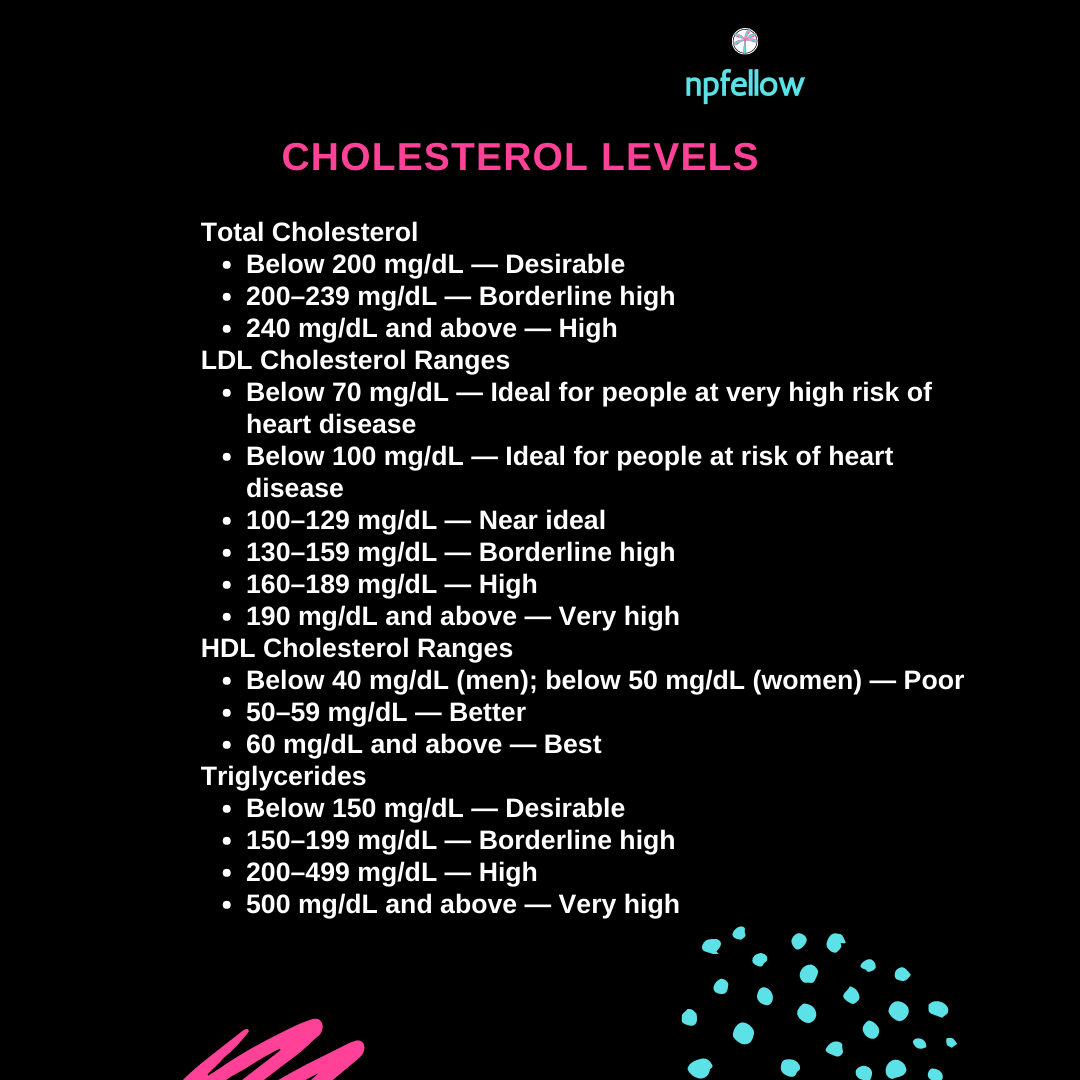High Cholesterol 101

High cholesterol, also know as Hypercholesterolemia, is an elevated level of cholesterol in the bloodstream. It is a precursor to atherosclerosis- stiffening and hardening of blood vessels. Cardiovascular disease is the number one killer worldwide. High cholesterol along with Metabolic Dysfunction, or Insulin Resistance, poses an increased risk for atherosclerosis and cardiovascular disease. It is important to be aware of this as million of individuals worldwide are overweight or obese, hypertensive, insulin resistant, and have high cholesterol. The perfect setup to lay the foundation for cardiovascular disease is poor metabolic health.
Cholesterol is a fat-like, waxy substance present in all cells in the body and critical for survival. It is made by the liver and essential for proper functioning of cells, nerves, and hormones. Cholesterol is involved in the creation of cell membranes, bile salts, vitamin D, and hormones. The brain also uses cholesterol to make neurotransmitters, like serotonin and dopamine. Cholesterol is a natural occurring substance that is important for all vital bodily functions.
Triglycerides and cholesterol are different types of lipids that circulate in the blood. Triglycerides are a type of lipid, or fat, in the blood that store calories that aren’t used and provide the body with energy. High-density lipoproteins (HDL) help remove fat from the body by binding with it in the bloodstream and carrying it back to the liver for elimination. Low-density lipoproteins (LDL) carry mostly fats and only a small amount of protein from the liver to other parts of the body.
The problem arises when inflammation is present with excess low density lipoprotein (LDL) cholesterol particles inside arteries leading to the formation of dangerous plaques. High cholesterol in the presence of inflammation is the true culprit. Inflammation causes damage to the endothelial lining of arteries, which activates the clotting cascade and inflammatory response. Clots form and cholesterol particles stick to them and create blockages. This presents a major risk for an ischemic event, like a heart attack or stroke.
Statistics
28 million Americans have an elevated cholesterol level. It affects both children and adults worldwide. 7% of U.S. children and adolescents ages 6 to 19 have high total cholesterol. Having high blood cholesterol boosts the risk for heart disease, the leading cause of death, and for stroke, the fifth leading cause of death.

Pathophysiology
High cholesterol is associated with an elevated amount of lipids in the bloodstream. Inflamed, stiffened, hardened artery walls are the perfect foundation for clots to form and tiny cholesterol particles to stick it and block blood flow. This allows for cholesterol particles to form fatty streaks which activates the inflammatory response. Eventually these fatty streaks oxidize and calcify leading to loss of elasticity and ability to pump blood efficiently. Artery walls weaken and the heart has to compensate by pumping harder. This leads to increased heart rate and blood pressure. Plaques build up, block blood flow, and ischemia occurs. If blood flow is not restored within a timely manner, hypoxia and tissue death can occur.

Risk Factors
There are several risk factors for high cholesterol. Genetics, lack of exercise, sedentary lifestyle, being a female, being over the age of 55, smoking cigarettes, blood sugar imbalances, an under active thyroid, and chronic psychological stress pose a risk for hypercholesterolemia.

Signs + Symptoms
High cholesterol is silent meaning it causes no symptoms. This poses a problem because most individuals do not know that have an elevated cholesterol level unless they visit a healthcare provider and have labs drawn. Upon review, a cholesterol level greater than 240 mg/dL would be found. Individuals may also have an elevated blood glucose level, a wide waist circumference, and high blood pressure reading.

Dx + Testing
Hypercholesterolemia is diagnosed at a cholesterol level of 240 mg/dL or greater. Borderline high is 200-239 mg/dL. A desirable level is below 200 mg/dL. An ideal level of LDL cholesterol is less 100 mg/dL. An optimal level of HDL cholesterol is 60 mg/dL and above. A desirable triglycerides level is less than 150 mg/dL. Any level over 200 is considered high.
Lab testing for high cholesterol includes a lipid panel, particle size test, and an initial comprehensive lab panel.
Another measurement to monitor for normal cholesterol is the HDL to LDL ratio. An optimal ratio is one HDL particle to every 2.5 LDL particles (1:2.5). So for each HDL particle, 2.5 LDL particles should be present. A ratio of 1:6 or greater represents cholesterol levels that are imbalanced and unhealthy.

Tx + Mgmt
High cholesterol is treated with exercise, diet, lifestyle modifications, and medication therapy. Statins, like atorvastatin and rosuvastatin, are first line agents for reducing LDL cholesterol. The goal of hypercholesterolemia management is to reverse insulin resistance and correct metabolic dysfunction. Reduce weight, lower pressure, and control blood sugar.
High cholesterol can be managed by a primary healthcare provider. Yearly physicals and lab assessments are critical to detect any elevated levels. Seek a fitness trainer or certified health coach to assist with an individualized diet and exercise regimen. Avoid excessive alcohol consumption and practice smoking cessation. A healthy weight, whole foods diet, and daily moderate to brisk physical exercise are key in high cholesterol prevention.

High Cholesterol Supplementation
A healthy, whole foods diet is very important. Avoid ultra processed foods, refined carbs, added sugars, and starch. Daily supplementation can help prevent and manage high cholesterol. A high-quality daily multivitamin in necessary to ensure adequate nutrient levels. Fish oils help balance out triglycerides and LDL cholesterol. They decrease inflammation and help maintain the omega 3:omega 6 fatty acid ratio and HDL:LDL ratio. Fiber helps regulate blood sugar absorption and decrease LDL cholesterol. Magnesium is important for normal blood pressure and blood vessel relaxation. Consistent consumption of these supplements can have a profound effect on hypercholesterolemia.

Keys to Success
High cholesterol is preventable and treatable (in most cases) with lifestyle modifications. Research has shown that 40 minutes of meditation decreases stress, cortisol, clot formation, and artery stenosis. Believe it or not, conscious relaxation is key in managing cholesterol levels. Mindfulness meditation for 40 minutes a day, or 20 minutes twice a day, can truly help tremendously. Daily, moderate to brisk physical activity pushes glucose into cells and out of the bloodstream. This prevents the conversion of sugar into triglycerides in the liver, thus, reducing blood glucose and central belly fat. An optimal diet rich in whole foods, fiber, protein, omega 3 fatty acids, and monosaturated fats are crucial. A consistent sleep regimen of 7-9 hours of sleep syncs the body with its circadian rhythm, which regulates blood sugar and hormone levels. A nutrient-rich diet, exercise and sleep regimen, and conscious relaxation are the top ways to prevent high cholesterol.

High Cholesterol + Self-Awareness
High cholesterol is silent- it has no symptoms, so many people don’t even know that their cholesterol is too high. A simple blood test can check cholesterol levels. Going to your primary healthcare provider yearly is vital to assess your labs. High cholesterol is a major problem that affects children and adults. It can lead to atherosclerosis, which is a precursor for cardiovascular disease. Everyone must be aware of this, including you, and me. Get to know yourself. Track and record in a journal your daily meals, activities, and workouts. Hold yourself accountable to exercise with consistency. Let your healthcare provider know if you feel any new symptoms or pain. Go to bed and wake up at the same times everyday. Prioritize your sleep and make sure your daily meditation never gets missed. Surround yourself with people who believe in you and support you. Share with them your health and fitness goals. Take accountability for your own health and gain awareness. Set an example for everyone around you.
Final Thoughts
Hypercholesterolemia is a serious problem that should not be ignored. It is a silent condition and many people are unaware that they even have it. High cholesterol along with poor metabolic health, creates an increased risk for atherosclerosis and cardiovascular disease. It is important to be aware of this as million of people worldwide are overweight or obese, hypertensive, insulin resistant, and have high cholesterol. Remember, you are not alone on your health journey. You can be healthy.
Thank you for reading this post.
